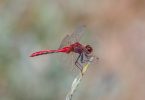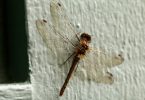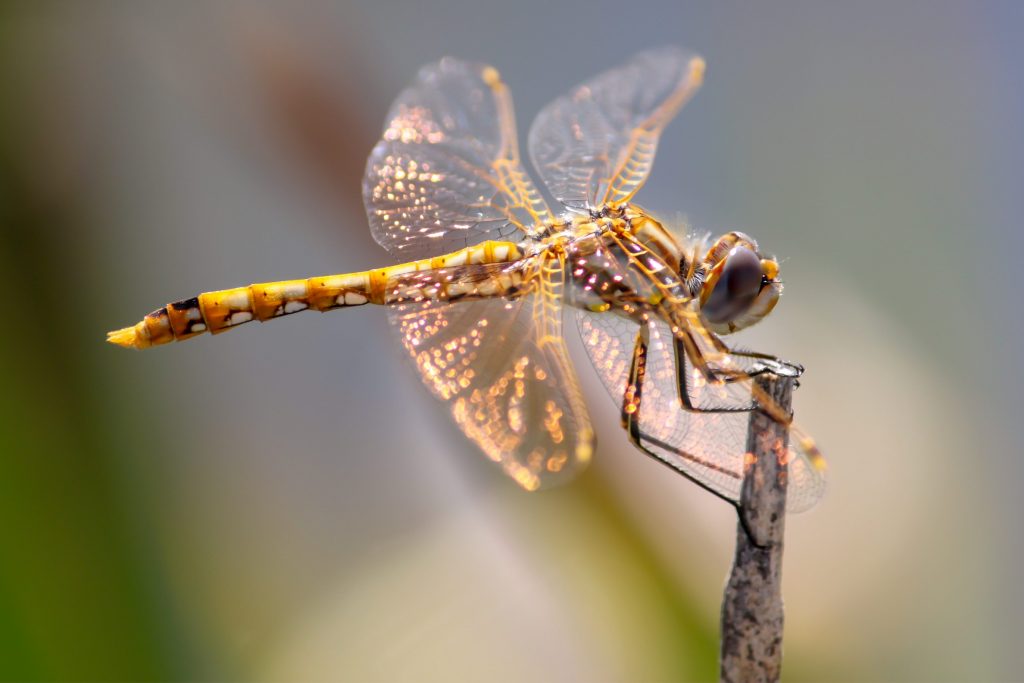
Natural History Notes
Variegated Meadowhawk (Sympetrum corruptum) is one of fourteen Meadowhawk species in North America or one of 62 species worldwide (Paulson 2009). It is different from other Meadowhawks, and dragonflies in general, because it migrates. Jim Johnson penned It’s Time to Watch for Migrant Meadowhawks (August 2011) blog post describing this phenomenon for the Pacific Northwest. Migratory Dragonfly Partnership has also posted a state-of dragonfly migration study by M.L. May (2102) in a pdf format: A critical overview of progress in studies of migration of dragonflies (Odonata:Anisoptera), with emphasis on North America.
Identification
How do you identify or separate this 1.5″ long dragonfly from other Meadowhawk. Tim Manolis (2003) in Dragonflies and Damselfies of California nails a written description of this insect: “…is highly variable in color, ranging from pastel pink to gold and tan to dull gray, but it has distinctive white, black-rimmed spots along the sides of the abdomen”. Dunkle (2000) in Dragonflies Through Binoculars drills down recommending: “to critically note the coloration of the face, legs, and wing veins, as well as the body”.
Paulson (2009) in Dragonflies and Damselflies of the West supplies the most obvious clue for separating Meadowhawk from other dragonfly genera; they are the only (one exception) group of small, red colored dragonfly (males). Below are some of my photos for your review and learning.
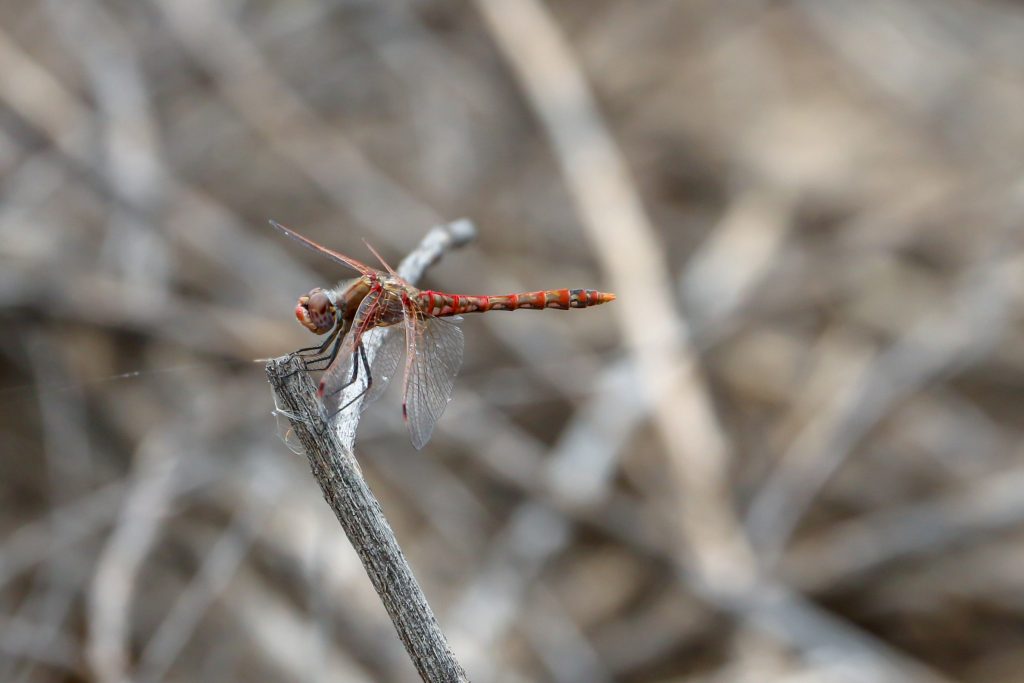
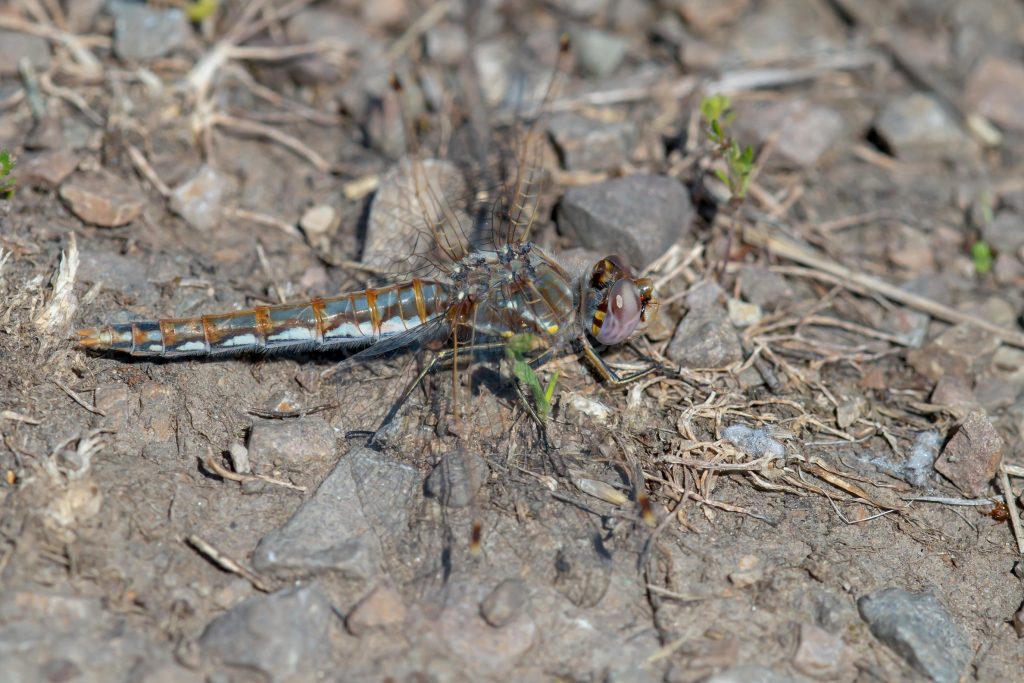
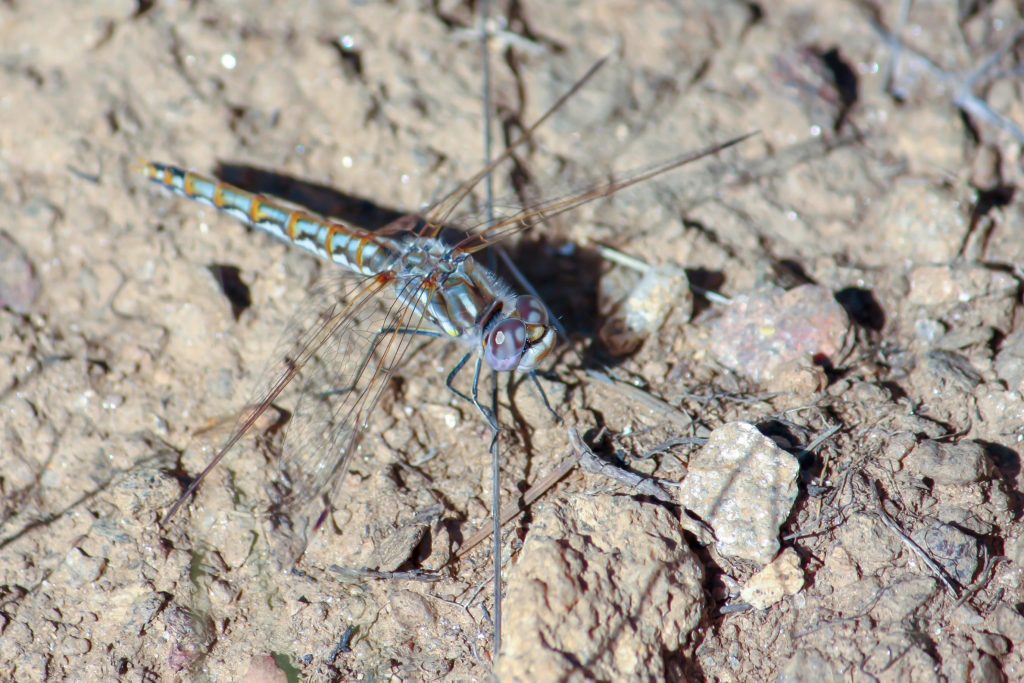

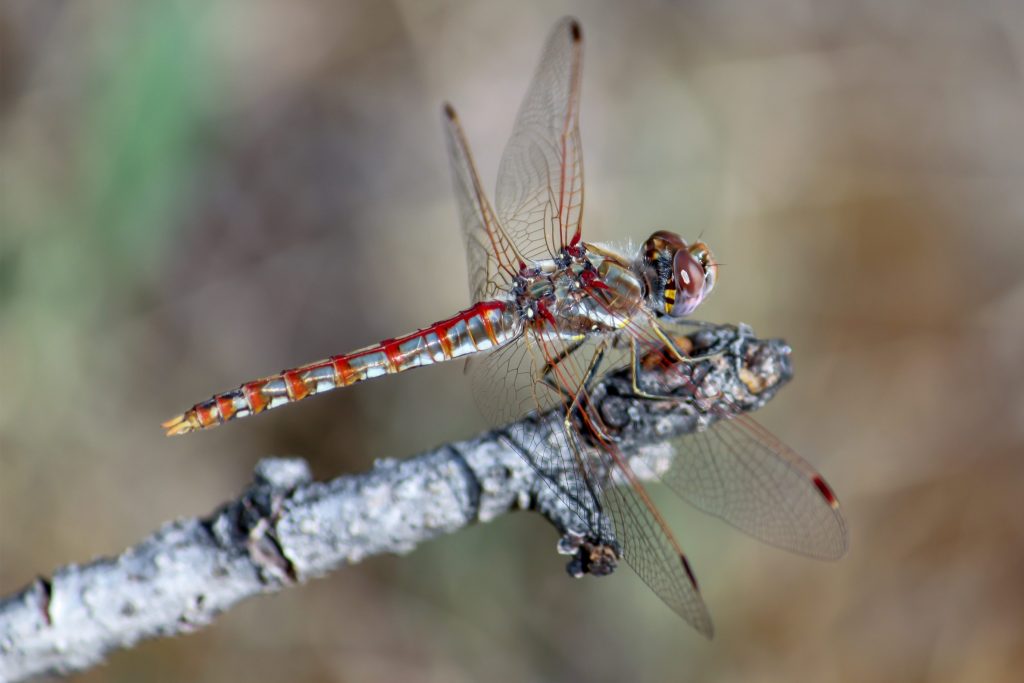
Where and When to Look
DuBois (2010) in Dragonflies and Damselflies of the Rocky Mountains characterizes wetland habitat used for breeding as: “stagnant and malodorous”. Mead (2009) in Dragonflies of the North Woods describes breeding habitat a little more precisely: “any available aquatic habitat, except bogs or acid fens”. Nikula, Sones, D. Stokes and L. Stokes (2002) from their published book, Beginners Guide to Dragonflies, formally describe breeding habitat: “at a variety of wetlands, including ponds, pools, slow streams, springs, and saline lakes.” These animals are not always present at wetland habitat; they forage far from water, at times, over open country (Manolis 2003) or meadows (Paulson 2009).
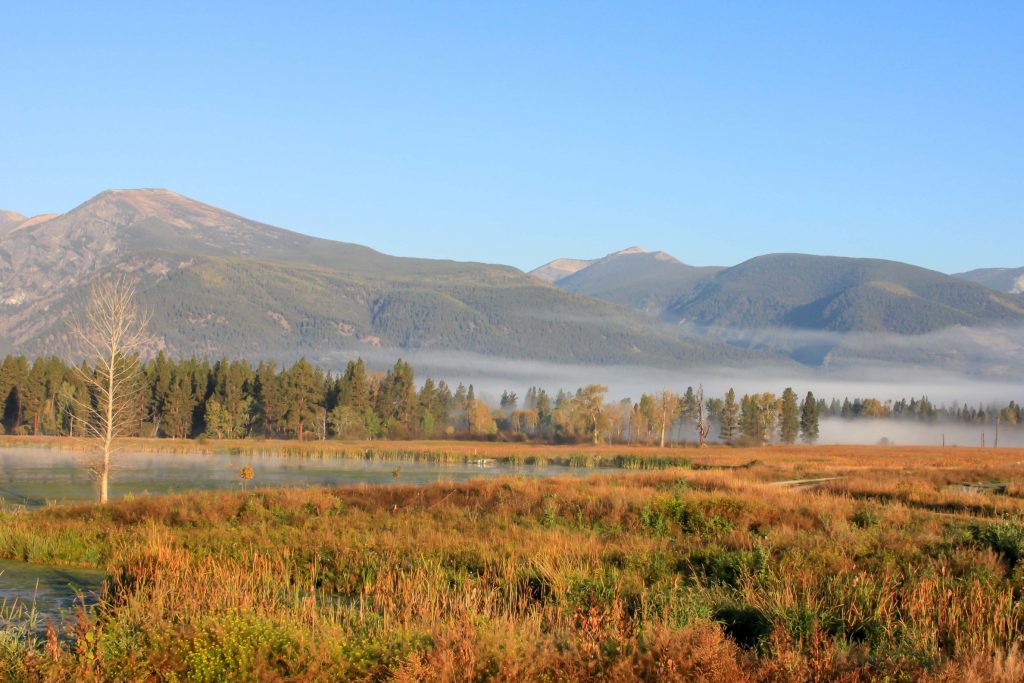
Found at the habitats described west of the Mississippi River into southern Canada; sparse records for the eastern half of the country (Paulson 2011). Winter migration destinations seem to be California, Arizona,Texas and into Mexico (Paulson 2009). They are resident at those places, as well as, in other southern areas of the U.S. year round (Dunkle 2000).
Most arrive in temperate areas of the country beginning in May (DuBois 2010), (Mead 2009) and (Paulson 2009). I have detected them as early as May 20 in western Montana. The majority of arrival dates here are during the first week of June. This is a YouTube video of a June 7, 2022 arrival locally. Depending on location, some will stay in northern locations into October.

